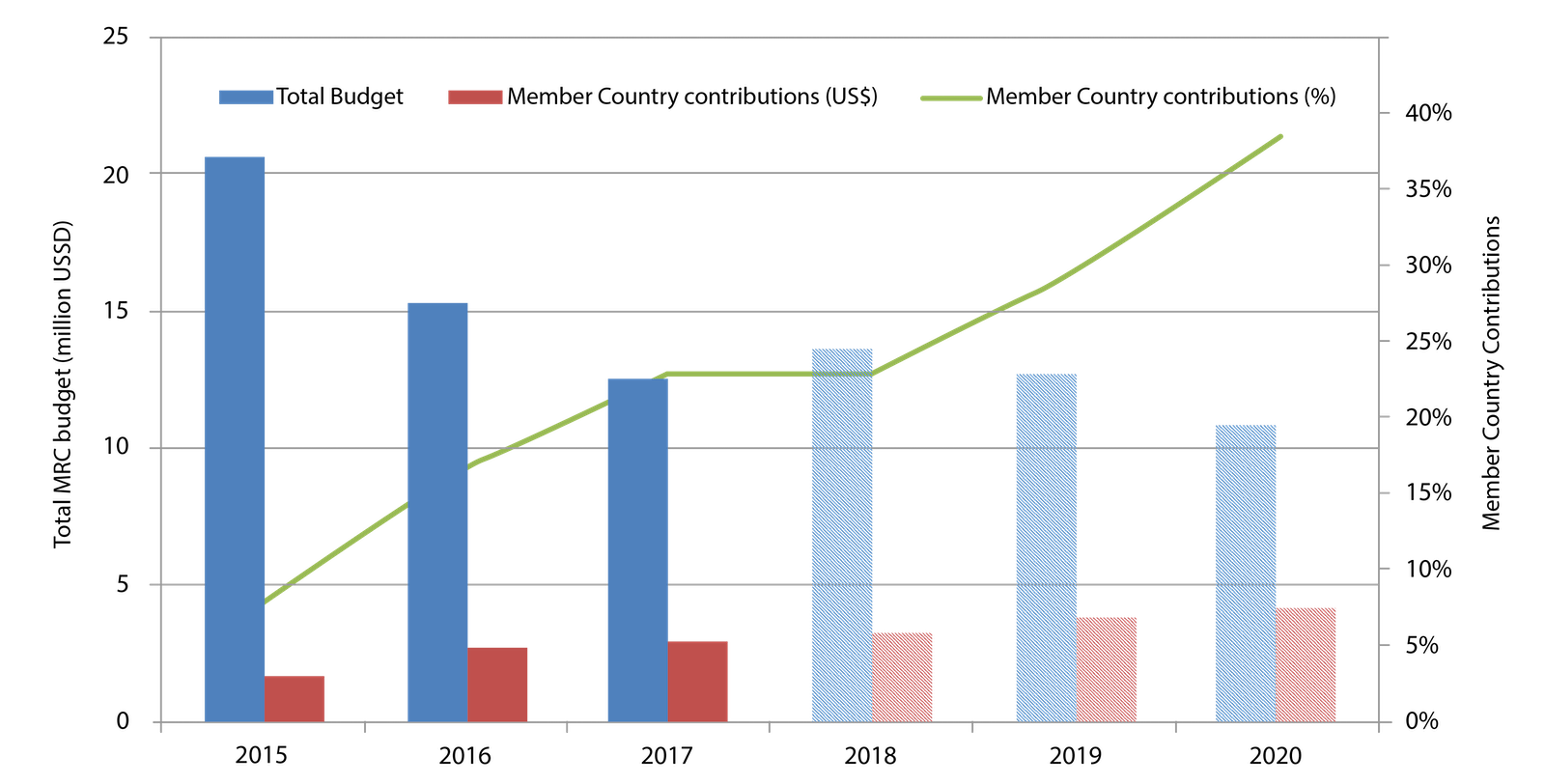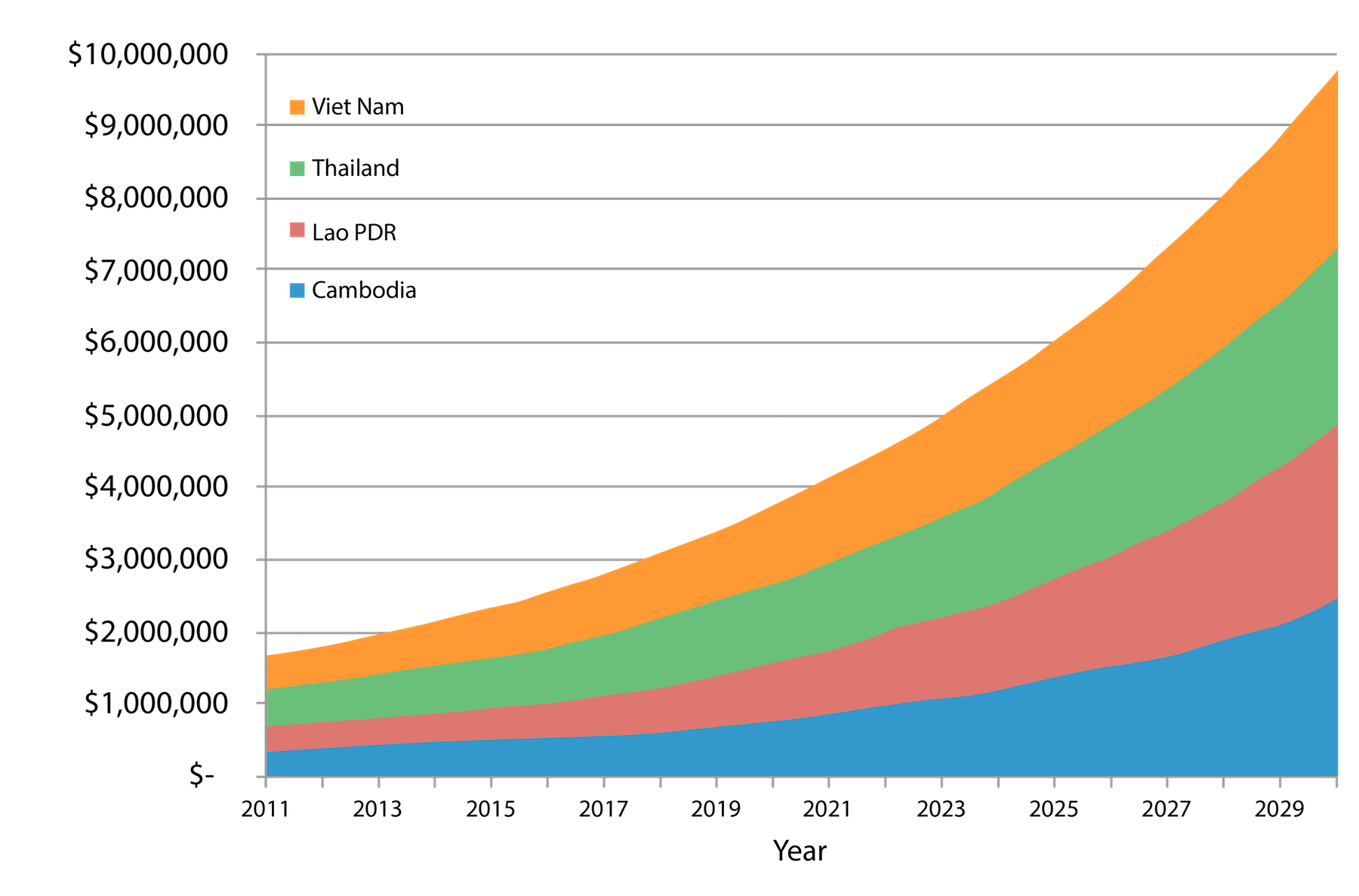Cooperation dimension
The cooperation dimension of the Indicator Framework reflects the MRC’s intent set out in the 1995 Mekong Agreement to assist in the promotion of interdependent sub-regional growth and cooperation among the community of Mekong countries and to provide an adequate, efficient and functional joint organizational structure to implement the Agreement. It provides for enhancing joint efforts and partnerships in achieving sustainable development as called for by the 3rd Summit of the four Heads of government in the Siem Reap Declaration of May 2018. Four strategic indicators supported by eight assessment indicators have been selected to measure whether the cooperation objectives of the Member Countries are being met.
↓ Scroll down to view the four strategic indicators supported by eight assessment indicators
Note: The selected findings presented here should be interpreted considering the assumptions, methodologies and data sources of the SOBR 2018. For complete assessments, consult the SOBR 2018 report.
Equity of benefits from the Mekong River system
Assessment indicators:
- Overall social condition in each country
- Overall environment condition in each country
- Overall economic condition in each country
The benefits derived from the Mekong River system cover social, economic, and environmental dimensions. Thailand and Viet Nam continue to draw the greatest economic benefits, particularly from agriculture and fisheries, including aquaculture and agriculture. However, Lao PDR is increasing its economic performance from Mekong resources through investment in hydropower, and there is some evidence of greater irrigation abstractions and enhancements of capture fisheries in Cambodia. The environmental benefits are shared across the four countries with increased dry season flows seen in Lao PDR and Thailand, more than Cambodia and Viet Nam at this stage. Wetland areas across all countries have declined substantially but could be under the greatest ongoing threat in Cambodia and Viet Nam. The decline in sediment transport will affect all countries with likely impacts on fish and agricultural productivity, river and coastal erosion, and potentially to navigation. The catch per unit effort of fish appears to be in decline in all countries, although more fish and other aquatic resources are being produced through aquaculture, especially in Viet Nam. Social conditions are generally higher in Thailand and Viet Nam due to their greater economic resources, although over recent decades all countries have made considerable progress on indicators of food, water and health security, as well as access to electricity.
Benefits derived from cooperation
Assessment indicators:
- Cross-border engagement in projects of basin-wide significance
- Cooperation between countries on joint projects
- Notification and engagement on projects with potential trans-boundary impacts
- Proportion of benefits derived from cooperation to total net economic value of all MRC water-related sectors
A substantial level of cooperation is evident among Member Countries towards the objectives of the 1995 Mekong Agreement. Joint projects cover a range of MRC water-related sectors including in relation to integrated flood plain management, strategic planning and strengthened coordination, and navigation. The PNPCA process is being used by countries to notify other countries of projects with potential trans-boundary impacts, notwithstanding some misunderstanding of the rights afforded to Member Countries during the process, and the not always satisfactory reconciliation of issues identified even when substantial re-design occurs.
Numbers of PNPCA notifications and prior consultations each year since 1998
User guidance: You can interact with the chart by moving the cursor over the bars.
↑ Chart description: Since 1998, there have been 49 notifications issued and four instances of prior consultation. The spike in 2013 can be attributed to hydropower projects being notified by Lao PDR. Since 2012 Lao PDR is the only country to have notified any projects for Prior Consultation under PNPCA.
Description of PNPCA: The PNPCA requires Member Countries to notify other Member Countries of proposed uses in the case of (a) intra-basin use and inter-basin diversion on the tributaries, including Tonle Sap; and (b) intra-basin use during the wet season on the mainstream. Prior consultation between Member Countries is required to take into account Article 5 of the Mekong Agreement and is aimed at arriving at an agreement in the case of the following proposed uses: (a) inter-basin diversion from the mainstream during the wet season; (b) intra-basin use on the mainstream during the dry season; and (c) inter-basin diversion of the surplus quantity of water during the dry season.
However, further measures are needed to improve the exchange of information and data, improve water-use monitoring, and to elevate cooperation to a level that includes: the joint environmental monitoring effort; joint review of national water-related sectors development planning every 5 years; and joint overall planning of future strategic development as a means of optimising sustainable development and management of the basin’s resources.
Joint projects prioritised by Member Countries in response to the Basin Development Strategy 2016-2020
Self-financing of the MRC
Assessment indicators:
- Proportion of MRC budget funded by national contributions during current period
The MRC appears to be on track to achieve its 2030 objective of self-financing. In each of the past two years, the proportional contribution by Member Countries to the MRC budget has increased and is forecast to continue through to 2020.
The ratio of earmarked to basket funding has declined and is forecast to continue declining to 2020 consistent with the MRC Strategic Plan’s objective for a more flexible and agile financial management system.
Total MRC budget and total and proportional contributions from Member Countries from 2015 to 2017 with forecast expenditures and contributions to 2020

↑ Figure description: In 2017, the MRC’s total annual budget, including both basket funding and earmarked funding, was US$12,429,272. The proportion of this funded by Member Countries was 23 per cent: up from 17 per cent in 2016 and 8 per cent in 2015 (Figure 7.3). During the current 2016-2020 period, total annual expenditures are forecast to decline to just under US$11 million by 2020, of which approximately 38 per cent is expected to be financed by Member Countries, putting the MRC well on track to be self-financed by 2030.
Projected growth in contributions from Member Countries to 2030

↑ Figure description: This figure illustrates the projected growth in contributions from Member Countries out to 2030. This growth in Member Country contributions will see all countries each contribute 25 per cent of the budget of the MRC by 2030. The current 2018 budget is made up of proportional contributions of 30 per cent each from Thailand and Viet Nam and 20 per cent each from Cambodia and Lao PDR.